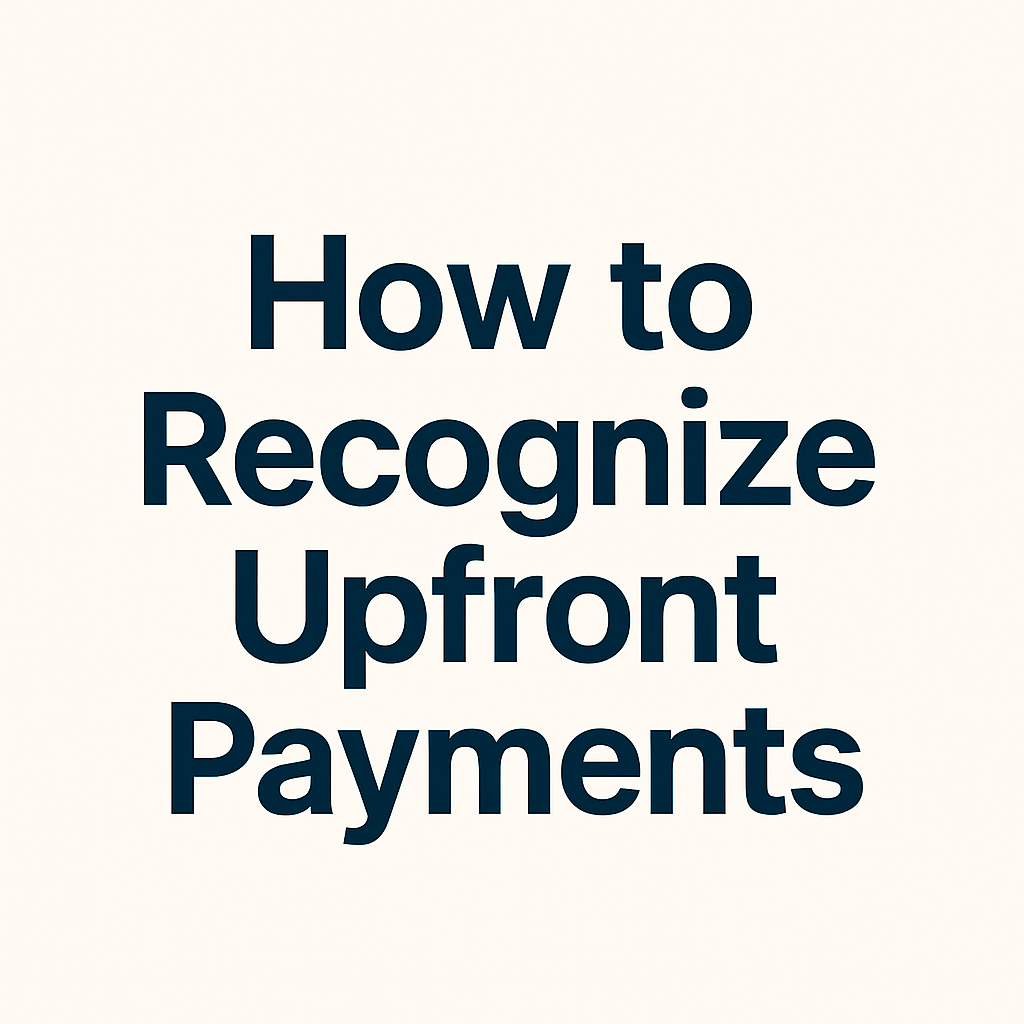
Learn how to properly recognize upfront payments in SaaS, like implementation and onboarding fees. Avoid common accounting mistakes, stay GAAP-compliant, and present clean financials to investors.

Jun 7, 2025

Upfront payments—like implementation or onboarding fees—can feel like easy revenue wins. A new customer signs, pays a few thousand dollars to get started, and you think: “Boom, we just made $5K!”
But from an accounting perspective, it’s not always that simple.
If you’re collecting upfront fees, here’s what every founder should know about recognizing that revenue properly.
Upfront fees are non-recurring charges you collect at the start of a customer relationship. These often include:
🧾 These are separate from your recurring subscription revenue.
Maybe. But not always.
It depends on what you’re actually delivering—and when.
You can only recognize revenue when the service has been delivered and the value is separate from the core subscription.
If you charge $2,000 for onboarding and deliver it over 2 weeks, and the customer would still benefit from that service even if they cancel afterward, you can usually recognize it immediately.
✅ Recognize revenue once the onboarding is complete.
If the customer can’t really use your platform without implementation, or if the fee is just “getting started” labor—not a separate deliverable—you can’t recognize the full amount right away.
⏳ You must defer and spread the revenue over the life of the customer relationship.
Example: A $3,000 setup fee for configuring the product, tied to a 12-month contract → recognize $250/month.
If you’re doing custom work or building out integrations as part of onboarding, this gets more complex. You may need to:
🧠 This is where a good SaaS accountant can help you stay GAAP-compliant and audit-ready.
Investors want to see predictable, recurring revenue. Inflating your monthly numbers with onboarding cash can make your MRR look artificially high.
🔍 Sophisticated investors will ask: “Is that actual recurring revenue, or one-time fees?”
If you book upfront fees as revenue but don’t recognize the costs or delivery timeline, you’re misleading yourself on profitability.
📉 Overstated revenue = bad decisions.
Recognizing unearned revenue too early can lead to overpaying taxes or getting flagged in a diligence process. That’s the last thing you want when prepping for a round.
Upfront payments aren’t free revenue—they’re often prepaid obligations. Recognizing them the right way keeps your books clean, your metrics real, and your investor conversations smooth.
We help early-stage SaaS founders get this right—whether it’s onboarding fees, annual contracts, or custom services.
📩 Ready to clean up your books and gain investor trust? Let’s talk.
© 2025 Startup Accountant. All Rights Reserved.